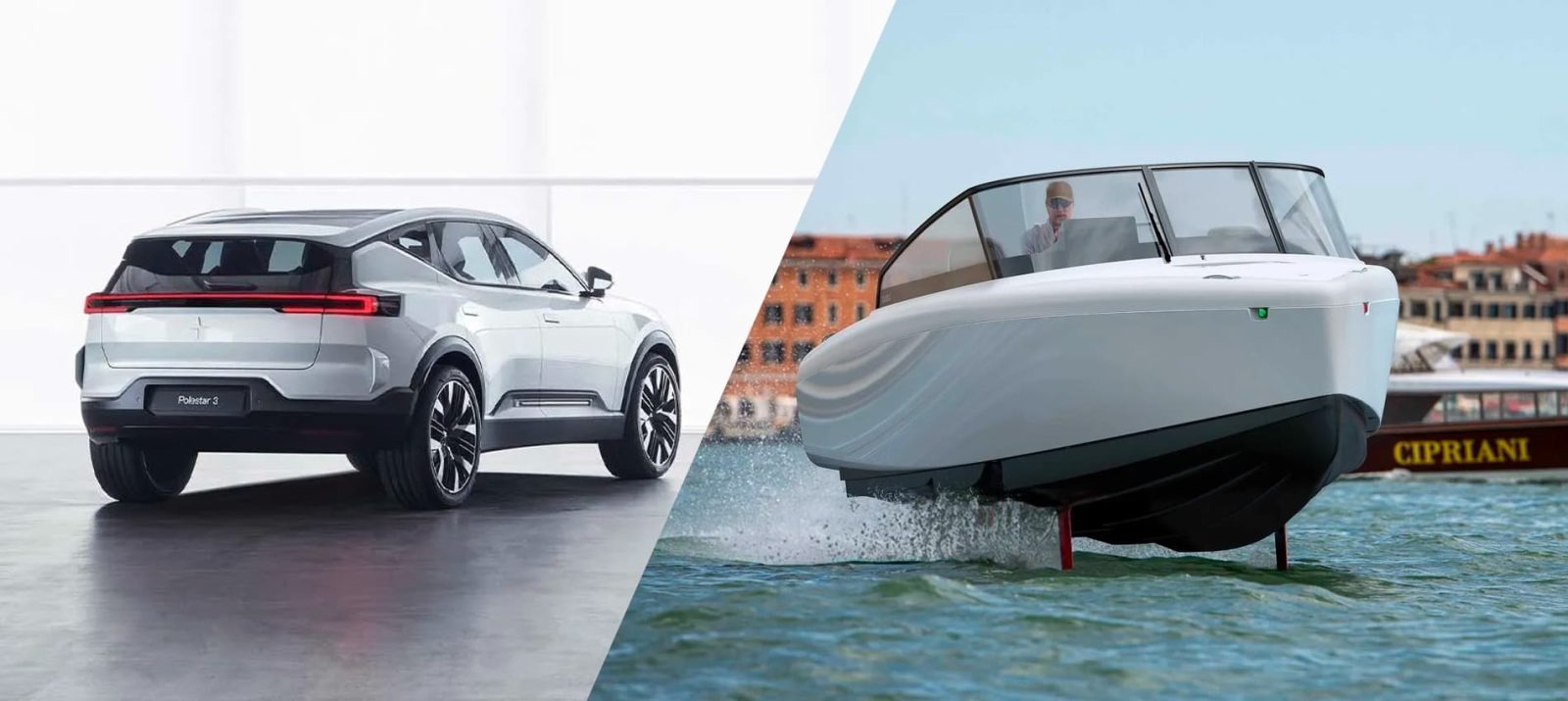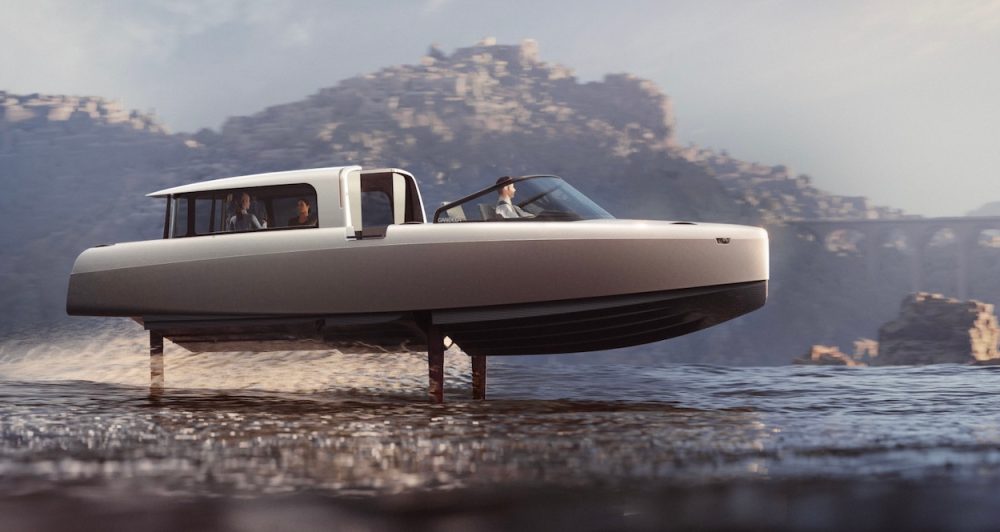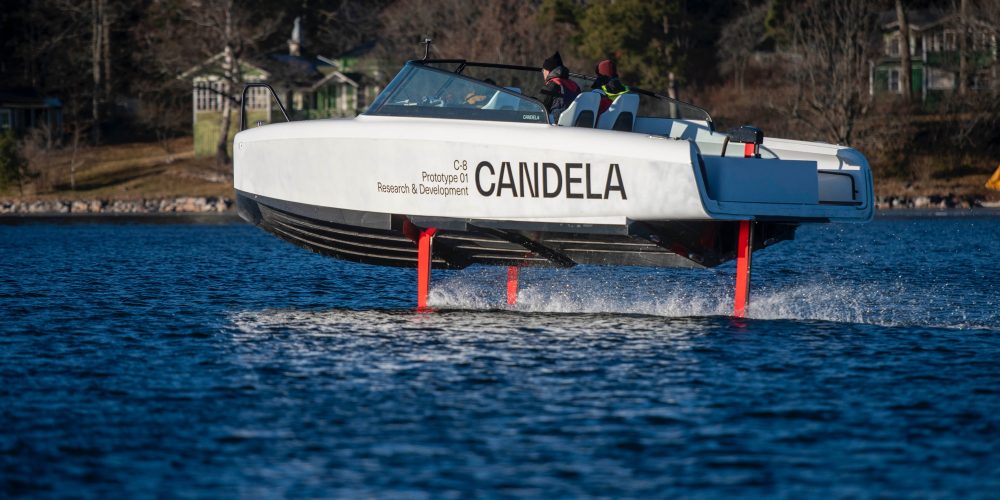
Two Swedish electric mobility companies are teaming up in the first ever battery deal between an electric car company and an electric boat maker. Polestar’s powerplants will find their way into two models of Candela’s flying electric boats, marking an industry first.
Polestar and Candela partner up
The Candela C-8 as well as the recently announced Candela P-8 Voyager will both receive the new Polestar batteries and charging systems.
The deal gives Candela access to Polestar’s state-of-the-art automotive batteries designed for electric cars. Most electric boat builders rely on specialty boutique manufacturers of marine batteries, but Candela will now be able to leverage Polestar’s expertise to reduce costs and increase production.
Candela and Polestar together hinted at future developments from a broader partnership, saying that this was just the beginning and that they were “committed to exploring further opportunities for future collaboration.”

Candela began production of its C-8 electric boats earlier this year. Now the newly announced Polestar deal is expected to drastically speed up that production as well as help the company lower prices in the future.
That production ramp up could help make electric boats more mainstream.
As Candela’s CEO and founder Gustav Hasselskog explained:
To make electric boats mainstream, we need to build thousands of boats every year. Working together with Polestar, we’re able to bring the scale of production and world class engineering from the automotive industry to the marine sector.

Candela’s electric boats already differ significantly from the few other electric boat options on the market by more efficiently using the energy stored in on-board batteries.
Most boats, whether electric or powered by an internal combustion engine (ICE), plow through the water with a V-shaped hull. That’s incredibly energy intensive and means most electric boats require massive batteries and high power motors.
Candela’s electric boats use a fraction of the same energy by flying above the water on a pair of hydrofoils, which function like airplane wings under the surface of the water.
Those hydrofoils lift the boat’s hull completely out of the water and help cut energy use by around 80%. Not only does that mean the boats can use smaller, lighter and less expensive battery packs, but they are also much smoother to ride in because they don’t bounce on the waves and choppy water.
It’s an elegant way to travel on the water and even impressed Polestar’s CEO Thomas Ingenlath:
I am fascinated by way Candela’s boats glide elegantly and efficient through, or better, over the water – amazing proof of the great aesthetics and experiences modern, sustainable technology can create. That Polestar will be part of future projects with Candela by supplying an essential part for the innovative propulsion of their boats, is awesome. As a battery supplier to Candela, we can help drive the transition to cleaner oceans and lakes, and electrify waterborne transport.

The Swedish boatmaker Candela is in the process of moving into a new, larger production facility to increase its capacity.
I recently visited the company’s current factory in Stockholm to see the production process for the C-8, which is much more streamlined than what I saw last year for Candela’s previous C-7 electric boat.
I also had the honor of being one of the first international journalists to take the C-8 out for a spin in the waterways around Stockholm. The boat was an impressive ride, flying higher out of the water than I experienced on the C-7 and tackling even larger boat wakes.
I was able to fly right behind a cruise ship, cutting across its wake in what would have been an incredibly bouncy and jarring experience on any other boat. But in the Candela C-8, I flew smoothly over the rough water behind the cruise ship, as if it weren’t even there.
The company’s revolutionary C-POD drivetrain also hides the electric motors completely under the water and outside of the boat’s hull, meaning you can’t see, hear, or feel them while you’re operating the boat.
The entire experience was fascinating and speaks to just how different electric boat ownership is, especially when using hydrofoil technology like Candela’s. And now with access to new batteries from an electric car maker, it looks like Candela will be rolling out electric boats faster than ever.
The future of electric boating has never looked brighter.
FTC: We use income earning auto affiliate links. More.




Comments